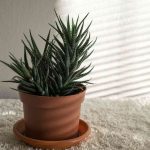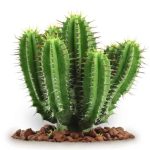Does your dog love digging in the soil? Pulling pesky weeds? Stealing your garden trowel when you need it most?
Despite their flaws, it’s hard to find better gardening companions than our canine pals. Fido might be content just helping out in the garden but that doesn’t mean he can’t join in reaping the rewards.
But can dogs eat vegetables? Well, many common garden vegetables are safe for dogs to eat and contain important vitamins and minerals.
Here’s everything you need to know about feeding your dog vegetables (and which veggies you should grow in your garden for pup-friendly snacking):
Table of Contents
Can Dogs Eat Vegetables?
Most veterinarians agree that vegetables aren’t required for a dog to live a healthy life. After all, dogs get most of their nutrition from meat and other animal products.
Even though vegetables aren’t a necessary part of canine nutrition, many are safe for dogs to eat.
Reasons To Feed Your Dog Vegetables
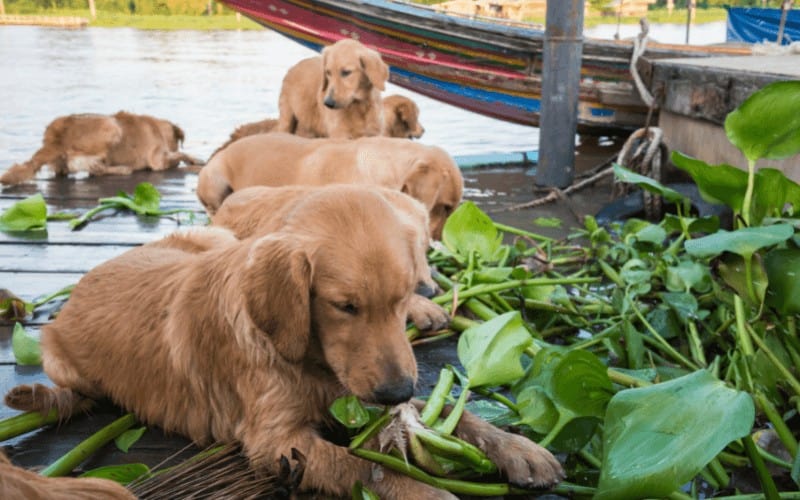
Not only are many vegetables safe for canine consumption but they also provide essential vitamins and minerals.
Many of the recommended green veggies for dogs are high in fiber, which can aid in digestion.
Vegetables make great treats. You can offer dog-safe veggies in place of biscuits or in addition to your pup’s regular snacks. If your dog is on a diet or sedentary due to injury or old age, vegetables are excellent alternatives to high-calorie treats.
Reasons To NOT Feed Your Dog Vegetables
The biggest potential drawback to feeding your dog vegetables is indigestion. While fibrous veggies can alleviate digestion issues in some dogs, they can worsen said issues in others.
Dogs with certain medical conditions (e.g., bladder and kidney diseases) will need to avoid specific vegetables that are otherwise safe for healthy dogs.
Some vegetables also contain chemicals that are non-toxic but can irritate your dog’s stomach in high quantities. Side effects can vary from mild gas to stomach pain.
14 Garden Vegetables Dog Can Eat Safely
Before feeding your dog fresh produce from your garden, we recommend washing the vegetables to remove soil, fertilizer, pesticides, and any other potential contaminants.
This will ensure your pup gets nothing but healthy, delicious vegetables in each serving!
1. Carrots

Carrots are safe for canine consumption, raw or cooked, so you can feed your dog these root vegetables straight from the garden. Carrots are packed with fiber, vitamins, and minerals, including vision-boosting beta-carotene.
According to the American Kennel Club (AKC), some owners even freeze whole or diced carrots to create a gum-soothing chew toy.
2. Lettuce

Lettuce is a staple of vegetable gardening, largely because it’s easy to grow and extremely versatile in the kitchen. It also makes a great alternative to high-calorie dog treats.
Popular lettuce cultivars like butterhead, romaine, and arugula are all safe for dogs to eat. Skip the salad dressing and let your pup enjoy fresh, homegrown lettuce straight from the garden.
3. Green Beans

Green beans are safe for dogs to eat and contain tons of beneficial vitamins and minerals. This vegetable is even recommended by veterinarians as a natural source of fiber and folate.
While green beans picked from the garden are always best, you can also offer cooked beans to your dog. Even canned beans are okay.
4. Celery

Not many vegetables have as few calories as celery. This is great news for dogs looking to lose a few pounds.
On top of being lean and hydrating, celery contains vitamins A, C, and K. Chewing on celery stalks may even prevent bad breath in dogs.
5. Cucumber

Cucumber is crunchy, hydrating, and tasty. Even picky eaters can find something to love about this popular garden vegetable.
Keep in mind that large pieces of cucumber can be choking hazards. It’s best to cut up this vegetable before offering it to your four-legged friend.
6. Peas

Popular cultivars like snow peas, green peas, sugar snap peas, and English peas are all safe options for your dog.
Peas contain a wide range of vitamins, minerals, and other nutrients. They also offer a nice dose of plant-based protein (meat should always be your dog’s primary source of protein).
While most peas are safe for dogs, the pods sometimes aren’t. According to the AKC, dogs can eat any pea pod that is safe for human consumption. Other varieties will need to be shelled before being fed to your dog.
7. Zucchini
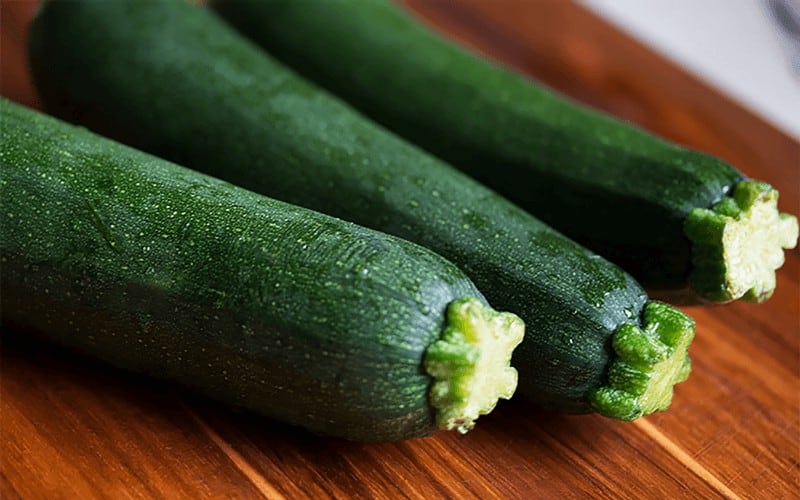
Zucchini is regarded as one of the healthiest vegetables for dogs. It contains tons of vitamins and minerals (plus fiber) without very many calories.
If zucchini isn’t making an appearance in your garden this year, most squash varieties are dog-approved, as well.
8. Broccoli

It might not be the easiest garden vegetable to care for but broccoli is a safe, healthy snack for humans and dogs alike.
While many dogs love crunching on broccoli florets, this veggie is infamous for causing gas, bloating, and other stomach issues. This is because of a compound called isothiocyanate.
Some dogs are more susceptible to these side effects than others. The best way to avoid stomach upset is to limit how much broccoli (and other isothiocyanate-containing vegetables) your dog eats.
9. Cauliflower

Cauliflower might not offer the same amount of essential vitamins and minerals as a head of broccoli. But cauliflower is just as safe to feed your dog as its green counterpart.
Cauliflower also contains isothiocyanates and is known to cause stomach issues in some dogs. So avoid feeding large quantities of this vegetable at one time.
10. Spinach

Spinach is safe for most dogs. According to the AKC, however, it shouldn’t be a regular addition to your four-legged friend’s diet.
This leafy green contains oxalic acid. While oxalic acid is non-toxic in moderation, high amounts of this compound can impact kidney health.
If your dog has a healthy urinary system, a few spinach leaves here and there won’t hurt. But owners of dogs with existing kidney issues should be cautious about feeding this vegetable.
11. Kale

If you’re unsure about feeding your dog spinach but still want to include leafy greens in their diet, kale might be the perfect alternative.
Kale also contains oxalic acid. However, the amount found in kale is far less than what you’ll find in a bundle of spinach.
Again, avoid feeding oxalate-containing vegetables to any dog with kidney-related health issues.
12. Beets
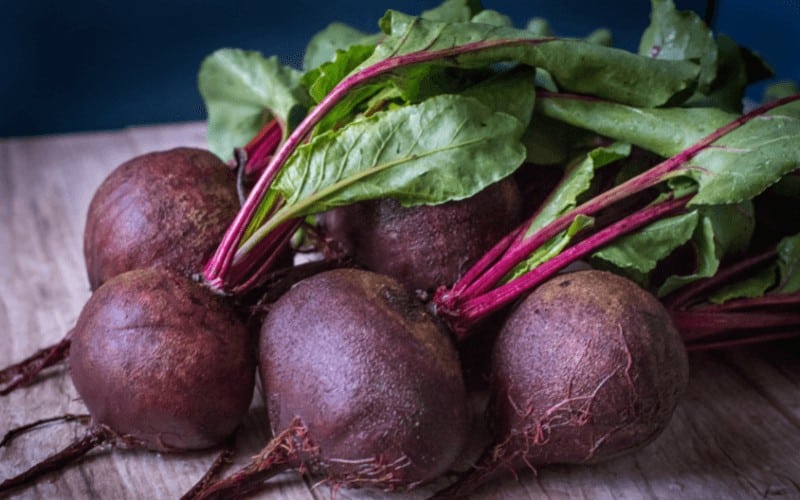
Not every gardener chooses to grow beets in their vegetable patch. If you do, though, these red veggies are a great treat for your canine companion.
One thing to keep in mind is that while beets are not toxic to dogs the raw root is very hard for them to digest. Avoid giving your dog raw beets as they may pose a choking or intestinal blockage risk.
With that said, cooked or pureed beets are a great source of vitamins A, B, and C. Like spinach and kale, beets should not be fed to dogs with urinary health issues.
13. Pumpkin

All pumpkin is safe for dogs, though raw chunks may be difficult to digest. To prevent choking, most dog owners offer this vegetable as a puree instead.
While many common garden vegetables can have unintended consequences for your dog’s gut health, pumpkin is famous for its digestive benefits.
The fiber content of pumpkin can support intestinal bacteria and alleviate issues like constipation or diarrhea.
Just like any other dog-safe vegetable, you can have too much of a good thing. Despite its health benefits, too much pumpkin can still trigger stomach upset in many dogs.
14. Butternut Squash
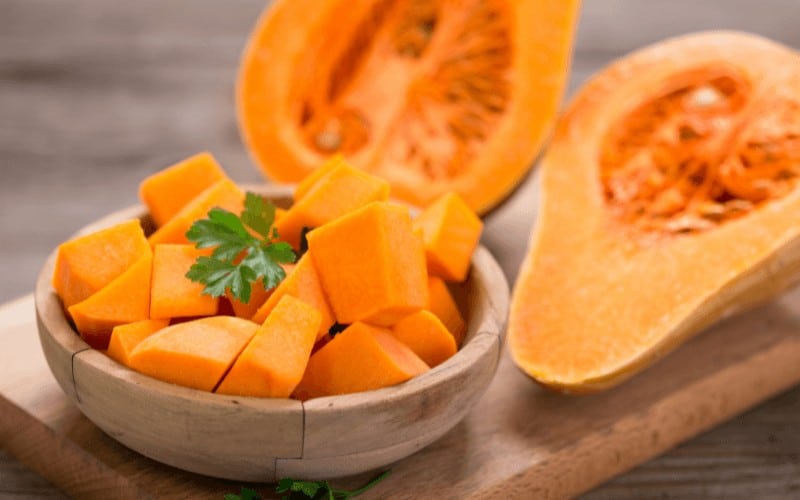
Butternut squash offers many of the same digestive benefits as pumpkin. On top of being a good source of fiber, butternut squash contains vitamins A, C, and potassium.
Butternut squash is also easiest for your dog to digest, either cooked or pureed. Avoid giving your pup raw pieces of squash which may result in an esophageal or intestinal blockage.
Which Vegetables Are Toxic To Dogs?
When harvesting garden vegetables for your dog, there are a few common varieties you’ll want to avoid.
1. Allium
Members of the Allium family, like onion, garlic, and leek, are toxic to pets. Side effects can range from stomach upset to serious red blood cell damage.
Certain dog breeds (and cats) are particularly sensitive to these plants but caution should be taken with all animals.
2. Rhubarb
Rhubarb is another garden crop that can be harmful to dogs. The leaves contain high levels of oxalates and may cause kidney damage.
While rhubarb stems do not contain oxalates, it’s best to keep Fido away from the plant altogether.
3. Potato
Harvested potatoes are generally safe for dogs. However, potato plants contain a harmful chemical called solanine that can cause vomiting and diarrhea.
If you are growing potatoes in your garden, make sure your dog does not eat the plants’ leaves or stalks.
4. Tomato
Again, ripe tomatoes aren’t toxic to dogs. It’s the plant itself (and unripe fruit) that can be dangerous.
Tomatoes contain solanine and another chemical, called tomatine, which can damage your dog’s kidneys and nervous system.
How To Introduce Your Dog To New Vegetables
Some dogs will help themselves to fresh fruit and vegetables from the garden. Others need a bit of coaxing to try out new foods for themselves.
At the end of the day, you should never force your dog to eat a food they don’t like. Some dogs just don’t like vegetables, and that’s okay.
But if you’re looking for safe ways to introduce your dog to vegetables, here are a few ideas:
As A Treat
The most straightforward way to add vegetables to your dog’s diet is to offer them as treats. Knowing which vegetables are safe for canine consumption makes it easy to slip your dog a quick snack from the garden or the kitchen.
Depending on your dog, vegetables might be a healthier alternative to traditional biscuits. Or you can feed vegetables in addition to the treats they already love.
While veggies are a healthier option than many dog treats, moderation is key. Treats — no matter what kind — shouldn’t make up more than 10% of your dog’s daily diet.
Offering veggies as occasional treats is a great way to practice feeding in moderation. This is particularly important when giving your dog vegetables they have never eaten before that may trigger stomach upset.
With Their Meals
Just like humans, some dogs are fussy about their food. It can be hard to coax these dogs into trying new things, especially vegetables.
You may be able to introduce new vegetables by adding small pieces as a “garnish” to your dog’s regular meals. Particularly picky eaters might require pureeing and mixing the vegetables in with canned or homemade wet food.
While many vegetables do offer tons of nutritional benefits, don’t stress if your dog refuses to eat them. High-quality dog food provides everything a healthy pup needs — any vegetables are just a bonus.
In Place Of Chew Toys
Will your dog get the same number of vitamins and minerals out of chewing on a vegetable as they will eating it? No. But there are still many benefits to letting your dog chew or play with non-toxic vegetables.
Crunchy vegetables can help soothe sore gums on a teething puppy. They can also maintain oral health and alleviate bad breath in adult dogs.
If your pooch is prone to destroying and eating their toys, making the switch to dog-safe vegetables can do a world of good for your peace of mind.
Related Posts:
- Is Spider Plant Safe For Cats
- Is Irish moss Safe for Dogs?
- Is Philodendron Safe For Cats
- Is Blue Star Creeper Poisonous to Dogs
- Is Coreopsis Poisonous to Dogs
Final Thoughts
Dogs aren’t exactly known for their love of salads. But if your dog enjoys helping out in the garden, it’s important to know which vegetables they can and cannot eat.
The good news is that many common vegetables are completely safe for canine consumption.
To keep your dog safe and comfortable, stick to small portions of vegetables. Even non-toxic veggies can trigger indigestion in large quantities.
Whether you feed your dog vegetables with every meal or just as an occasional treat, sharing your garden harvest can be a great way to use up those extra veggies and keep your pooch healthy!



